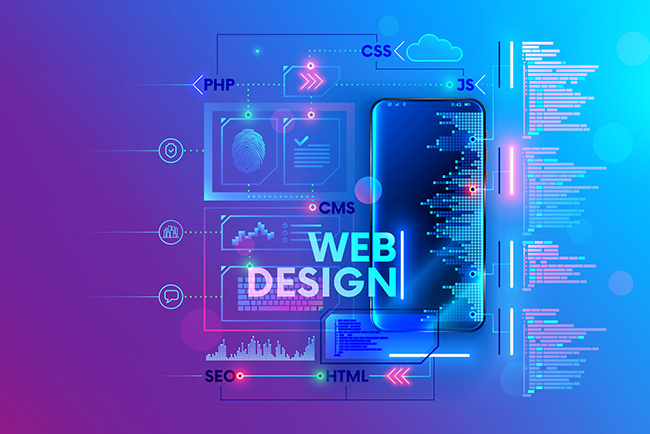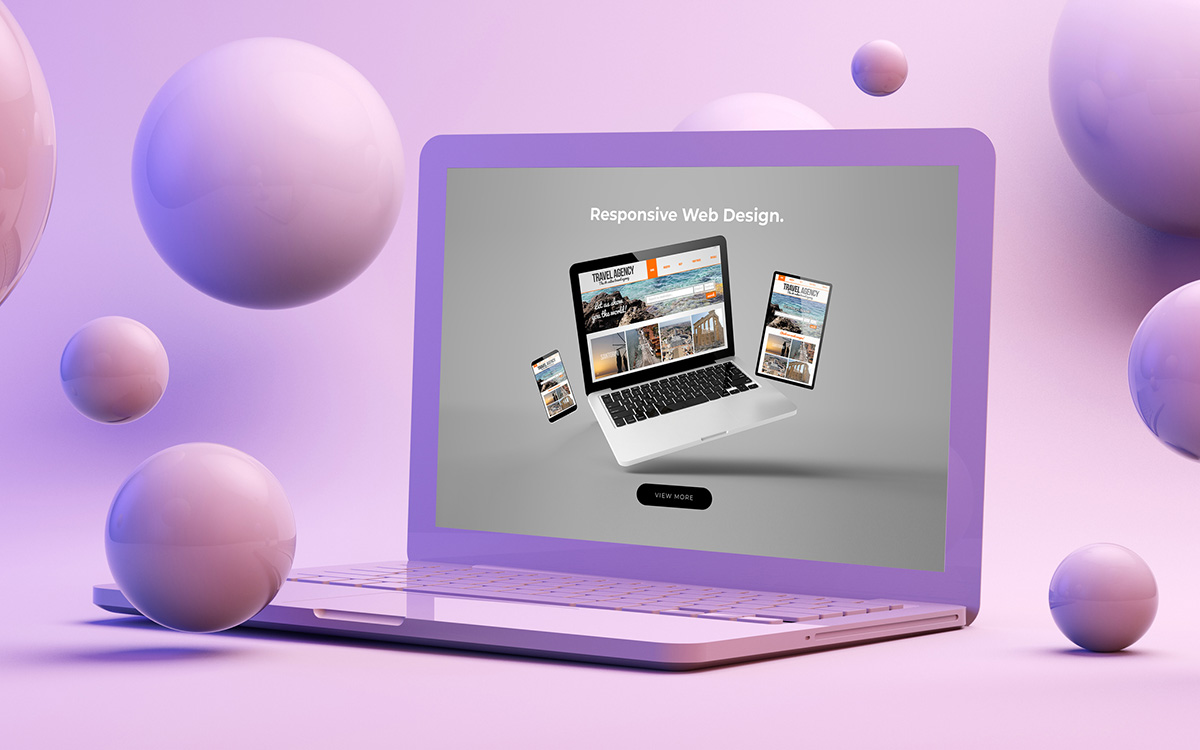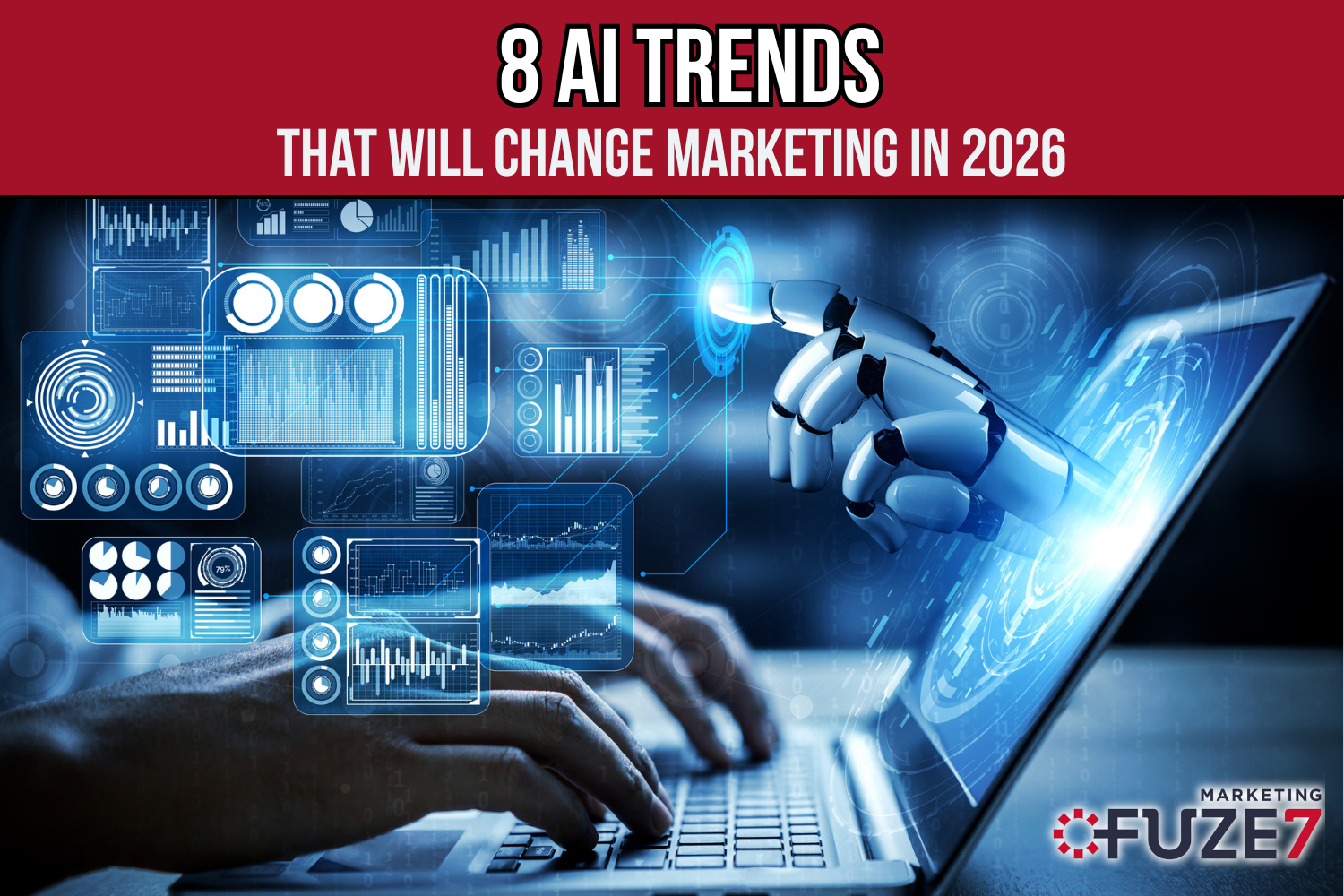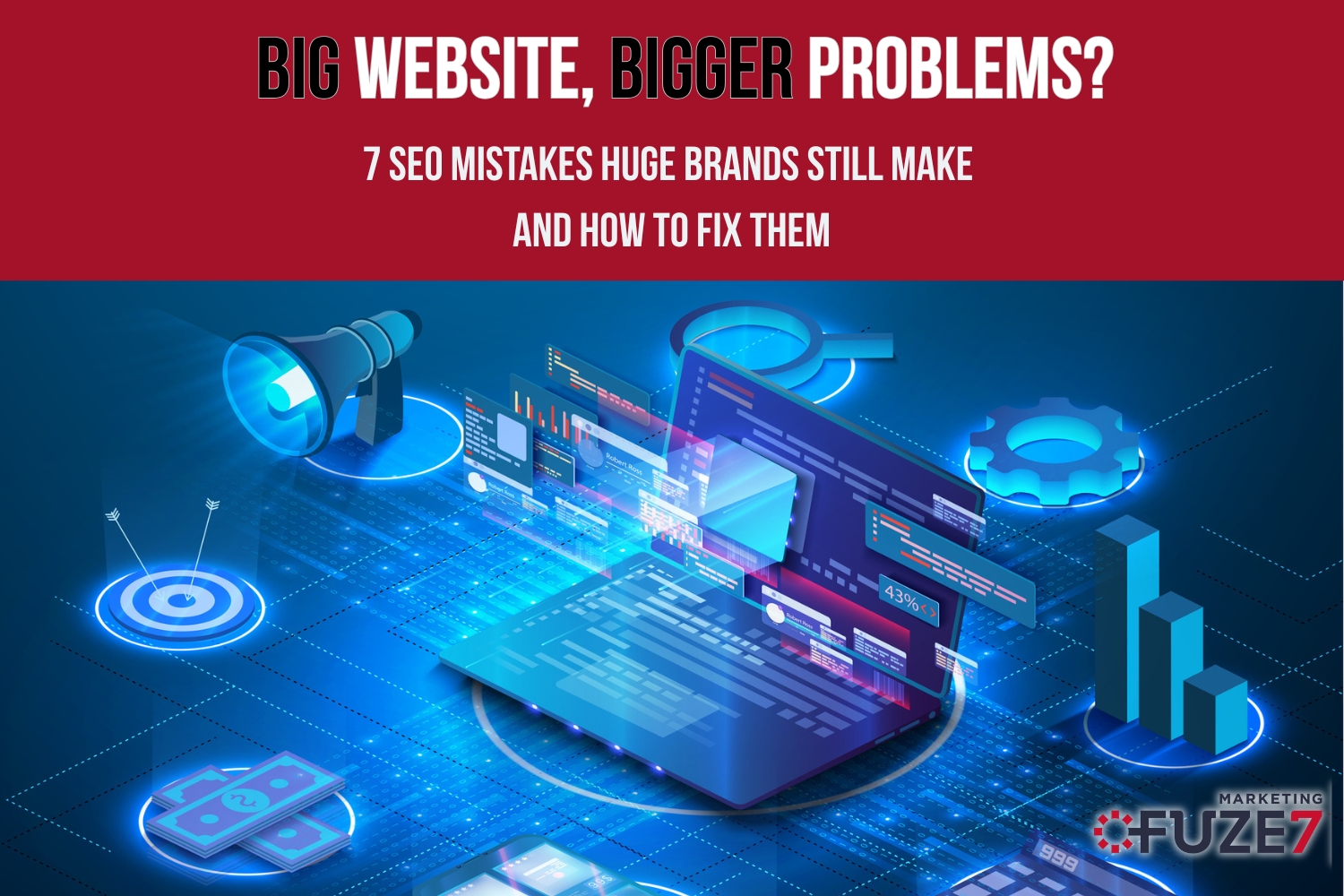Web design is ever-evolving and at a seemingly ever-quickening pace, driven in part by advances in technology, consumer demand, and shifting societal norms. What was commonplace yesterday, or even ahead of the curve, may quickly be out of date tomorrow. Keeping up with changes, staying on top of consumer trends, and remaining relevant and visible online can be a challenge for businesses. To help you, we’ve rounded up the top seven key trends we are seeing that you should be thinking about for your own website.
- Visual Enhancements
We are seeing more creativity in design with broader use of typography, color, and graphic elements, to communicate and reinforce strong brand identity. Modern styling with more muted colors, use of textures, and visual effects like glassmorphism are also helping sites stand out as fresh, current, and visually interesting.
- Interactive Features
User engagement–capturing and converting site visitors into customers–has always been a priority in web design. Today, we are seeing more sophisticated interactions and animations that enhance the user experience. Animated text, interactive fonts that respond to the user’s mouse, video backgrounds, gifs, and navigation that requires more than a simple click, are just some of the features found on highly interactive websites.
Dynamic, interaction-focused designs are creating a more app-like experience, which is also driving current web design. This trend should come as no surprise considering apps proliferate mobile devices and we are all becoming more accustomed to using them in our daily lives.
- Responsive Design
While responsive design and mobile optimization is not new, it is an important consideration in web design. Mobile devices are prevalent and often the primary access to the internet. Websites that are not responsive to different devices–desktop, tablet, phone–may be too difficult for users to browse or interact with on their preferred device.
- One-Page Navigation
One-page websites that forego traditional navigation for simple scroll navigation have become increasingly popular as they lend themselves well to mobile viewing. Single-page design removes the distraction of navigating or searching for content on multiple pages. We see these working best for sites with a narrow focus.

- No-Code Development
No-code tools such as WordPress, Shopify, Squarespace, and others enable easier and faster web design/development. While no-code tools have certainly opened the door for people with no development or design experience to jump into building their own websites, the downside is amateur web design that falls short of creating a positive or memorable user experience and is likely lacking in effective SEO.
- Gender-Neutral Design
Web design, in general, has been moving beyond traditional stereotypes and ways of defining personas to embrace more gender-neutral colors, images, language, and even gender-neutral fonts. According to recent statistics, 56% of people searching online for sports accessories are female while 68% of men look for skincare products. At the same time, 42% of Americans think multiple gender options should be recognized. Marketers and web designers have taken note and are more cognizant of the need to appeal to broader audiences that are less and less defined by gender.
- Fast Website Load Speed
Again, this is not a new trend, but expectations for fast load speed and what counts as “fast” continue to push the envelope. The ideal load time for a mobile site is 1-2 seconds, however, Google aims for a half-second load time. Sites with a 2-second delay in load time typically have an 87% abandonment rate and mobile sites that take longer than 3 seconds to load are abandoned 53% of the time.
- Dynamic Content
In simple terms, dynamic content is content linked to a database, that changes, typically in response to user signals that include in-session behavior, user data, and user characteristics. Thinking in terms of if-this-then-that scenarios helps to illustrate what we mean. Dynamic content is especially helpful for improving conversion rates on e-commerce sites. Another aspect of dynamic content is that it allows you to efficiently add, update, and import content automatically throughout multiple pages of your website, making updates faster and easier.
Your website must continue to evolve to remain visible online and deliver a user experience that converts leads into customers. If it has been a while since your website was last updated, it may be time for a refresh.
As a digital marketing agency, we specialize in optimizing your online presence through dynamic, responsive web design with high conversion rates, digital advertising, email, and social media campaigns. Our web designers and developers at Fuze7 are experienced in the latest technology and trends that keep our clients at the forefront. Contact us today to explore how we can help you stand out online and drive more traffic to your website.








